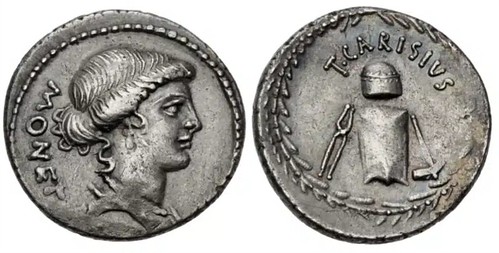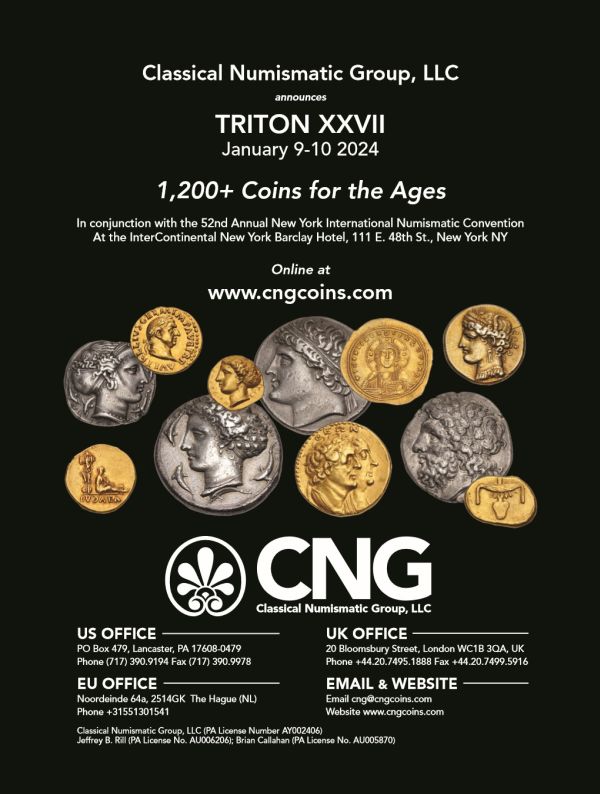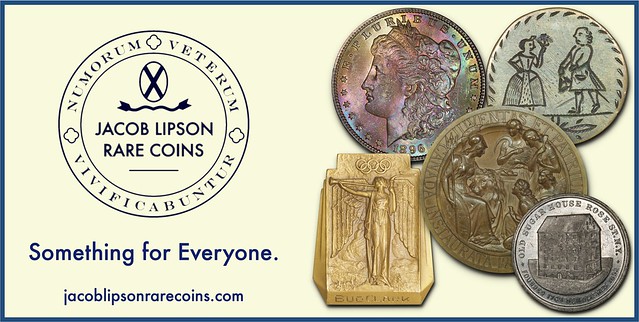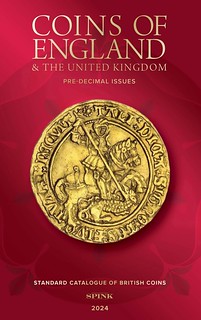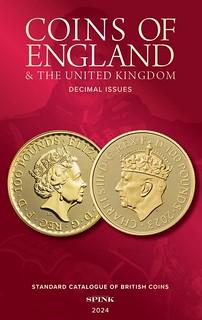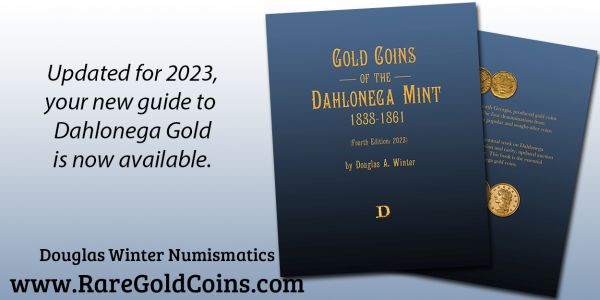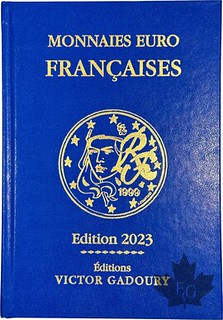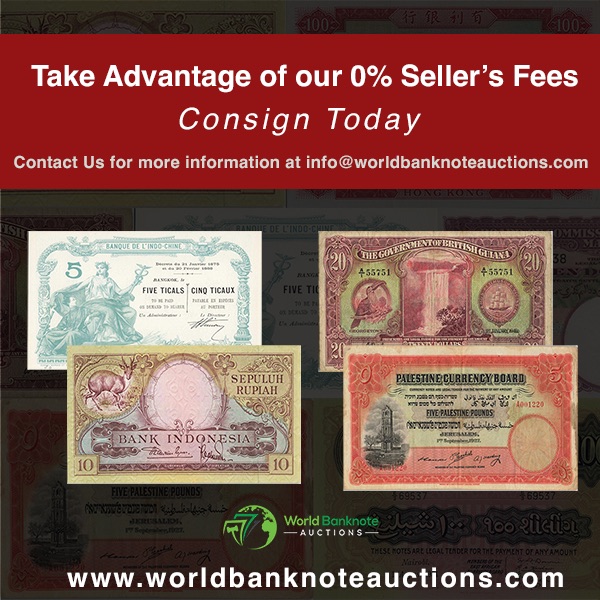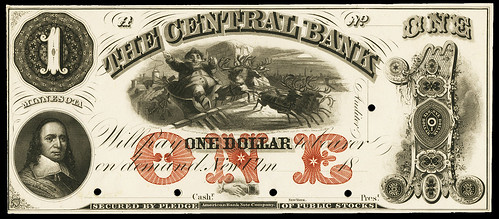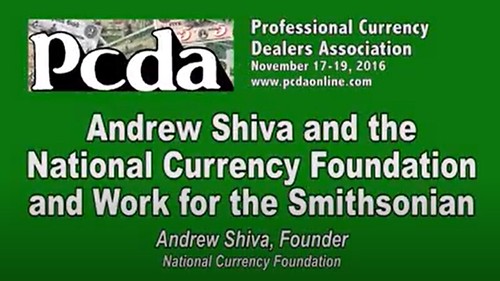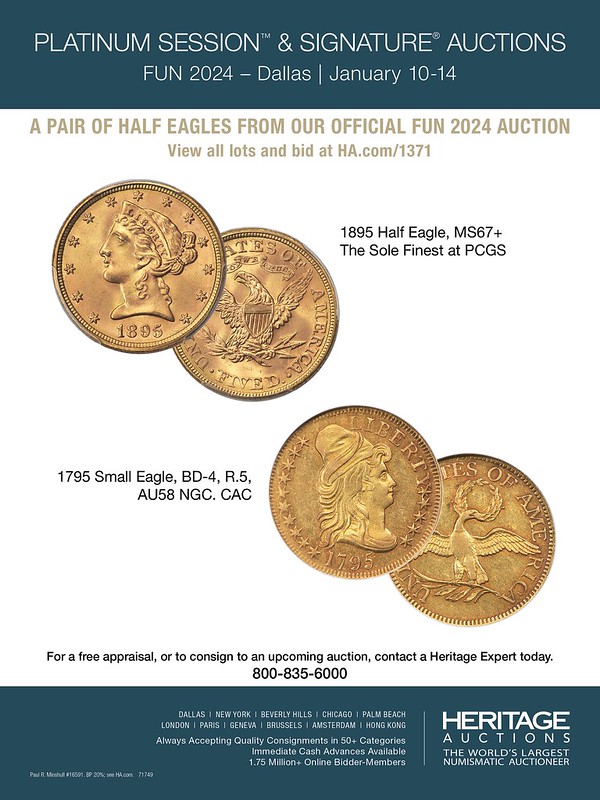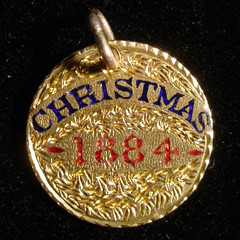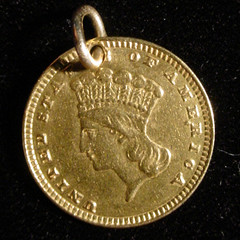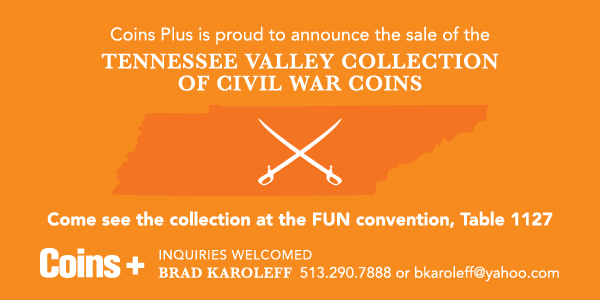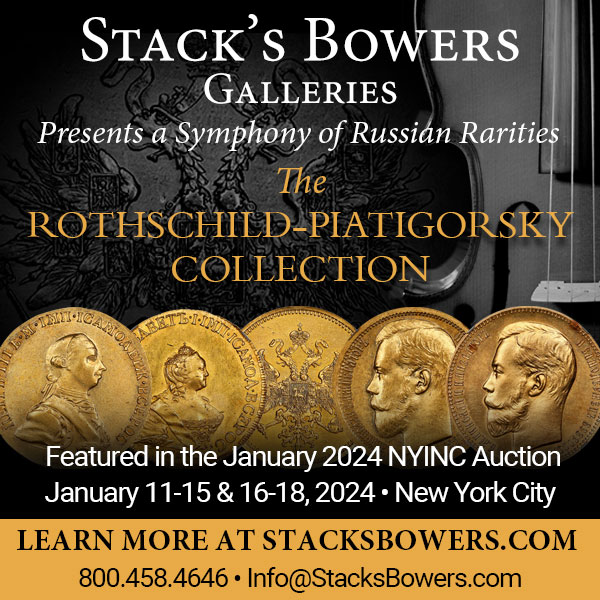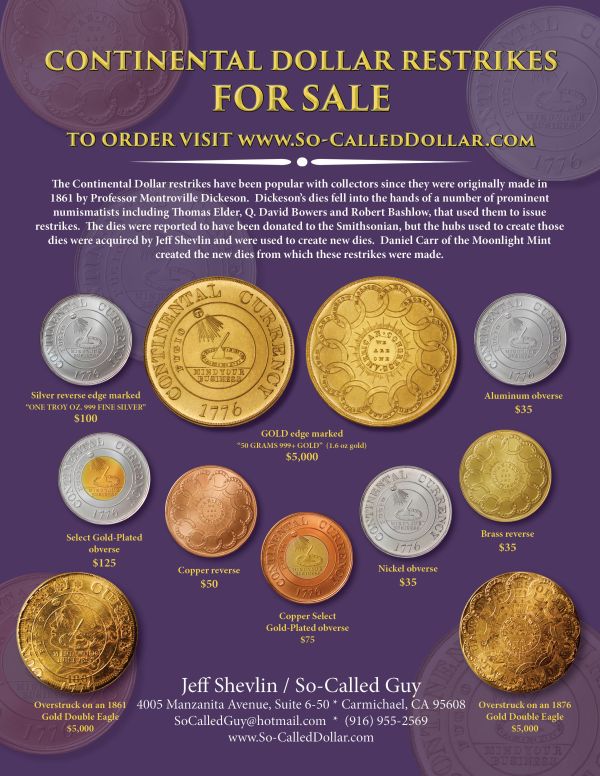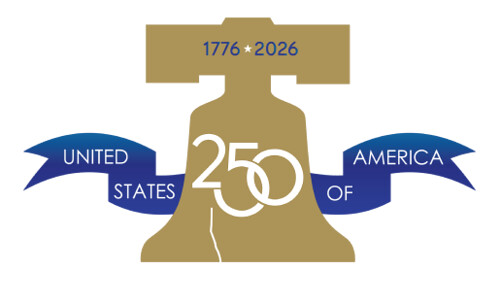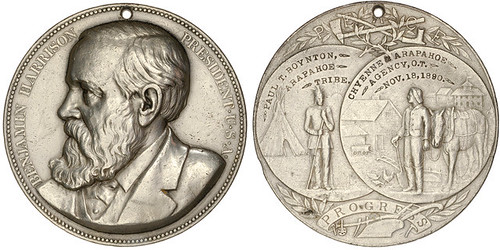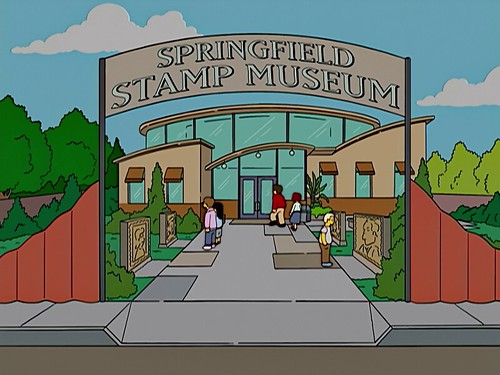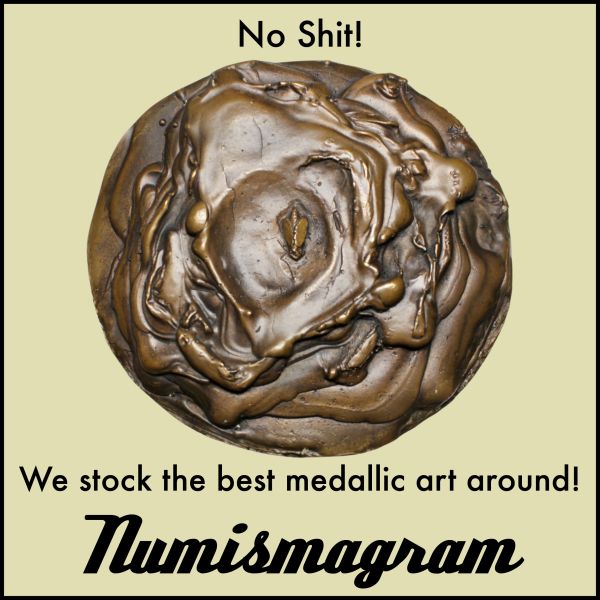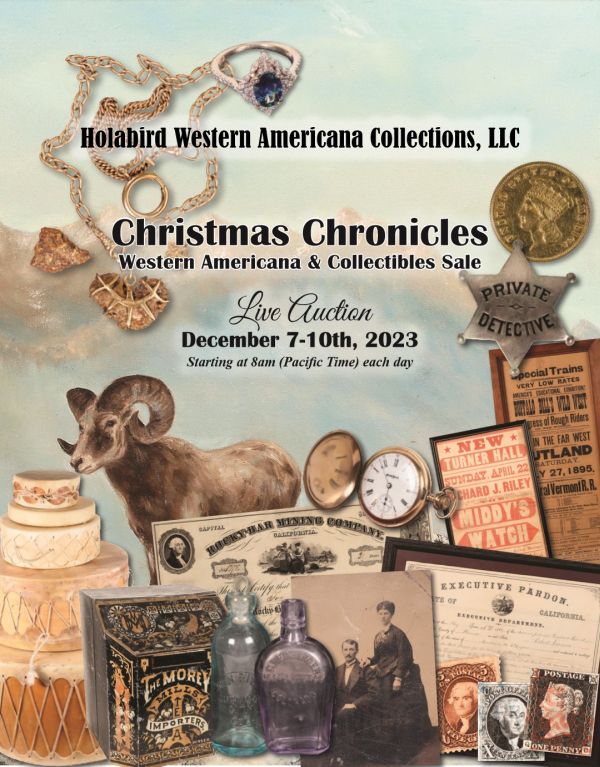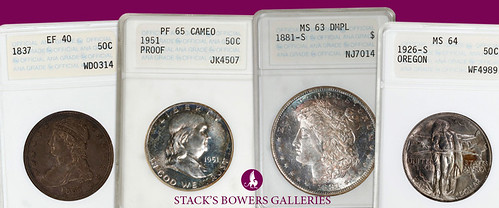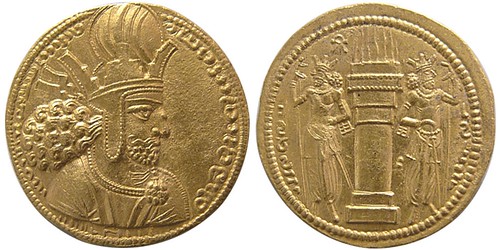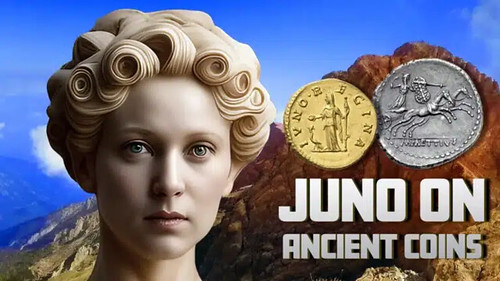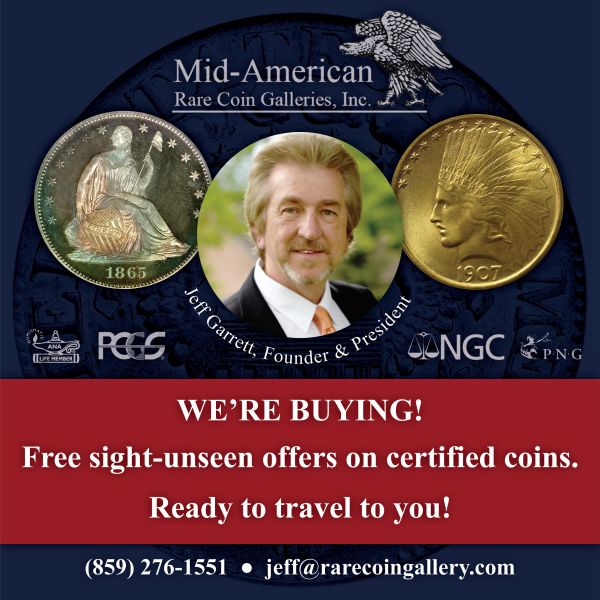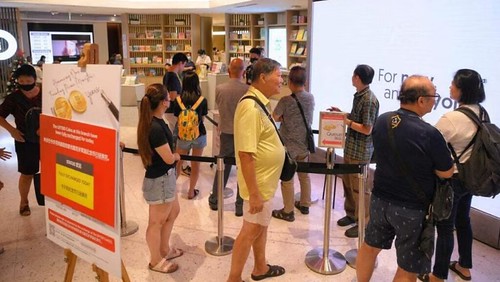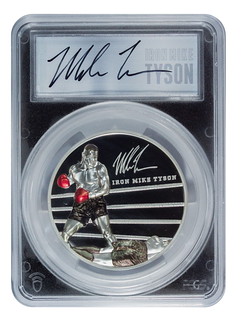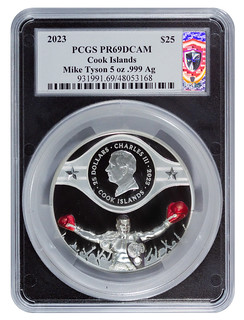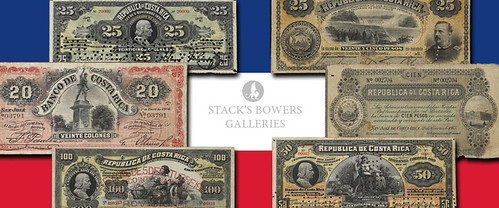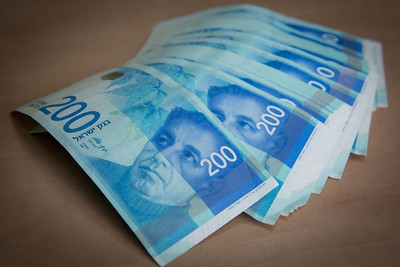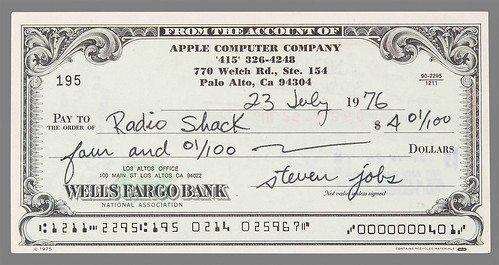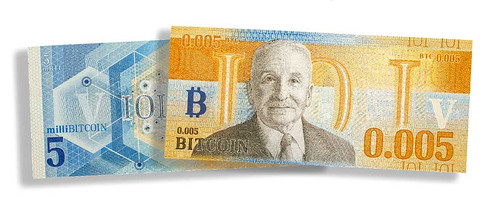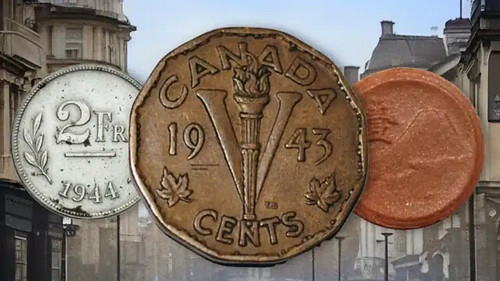
Visit our NBS Sponsors




About UsThe Numismatic Bibliomania Society is a non-profit association devoted to the study and enjoyment of numismatic literature. For more information please see our web site at coinbooks.org SubscriptionsThose wishing to become new E-Sylum subscribers (or wishing to Unsubscribe) can go to the following web page link MembershipThere is a membership application available on the web site Membership Application To join, print the application and return it with your check to the address printed on the application. Print/Digital membership is $40 to addresses in the U.S., and $60 elsewhere. A digital-only membership is available for $25. For those without web access, write to: Jeff Dickerson, Treasurer AsylumFor Asylum mailing address changes and other membership questions, contact Jeff at this email address: treasurer@coinbooks.org SubmissionsTo submit items for publication in The E-Sylum, write to the Editor at this address: whomren@gmail.com BUY THE BOOK BEFORE THE COINSale Calendar |
- WAYNE'S WORDS: THE E-SYLUM DECEMBER 10, 2023
- NBS BIBLIOTALK PODCAST WITH JOHN HOSKINS
- NEW BOOKS: COINS OF ENGLAND 2024
- NEW BOOK: MONNAIES EURO FRANCAISES 2023
- NEW BOOK: 100 GREATEST ANCIENT COINS, 3RD ED.
- BOOK REVIEW: THE 1909 LINCOLN WHEAT CENT
- SANTA CLAUS ON THE NEWMAN NUMISMATIC PORTAL
- VIDEO: NATIONAL CURRENCY FOUNDATION
- MORE ON MONEY MUSEUMS IN THE U.S.
- NOTES FROM E-SYLUM READERS: DECEMBER 10, 2023
- 1894 LETTER ON MINT DOCUMENT DESTRUCTION
- SEMIQUINCENTENNIAL COIN DESIGN IDEAS
- SEMIQUINCENTENNIAL LOGO REVEALED
- U.S. MINT SEMIQUINCENTENNIAL COIN SURVEYS
- VOCABULARY TERM: OVERLAP
- PHILATELIC MUSEUMS IN THE UNITED STATES
- DAVID SCHENKMAN INTERVIEW, PART SIX
- ANACS FIRST-GENERATION SLABS
- VILA RICA MOEDAS AUCTION 19
- THE LUGDUNUM AUCTION 23
- NUMISMATIC NUGGETS: DECEMBER 10, 2023
- JUNO ON ANCIENT COINS
- AUSSIES QUEUE FOR TWOS
- SINGAPORE LINES UP FOR $10 COINS
- MIKE TYSON'S
BADDEST COIN ON THE PLANET
- STACK'S BOWERS COSTA RICA BANKNOTES
- GAZA CASH CONVOY MOVES BANKNOTES
- APPLE COMPUTER CHECK BRINGS BIG BUCKS
- NOTEWORTHY ISSUES 0.005 BITCOIN NOTE
- LOOSE CHANGE: DECEMBER 10, 2023
Content presented in The E-Sylum is not necessarily researched or independently fact-checked, and views expressed do not necessarily represent those of the Numismatic Bibliomania Society.
WAYNE'S WORDS: THE E-SYLUM DECEMBER 10, 2023
 New subscribers this week include:
Stuart Weinerman.
Welcome aboard!
New subscribers this week include:
Stuart Weinerman.
Welcome aboard!
Thank you for reading The E-Sylum. If you enjoy it, please send me the email addresses of friends you think may enjoy it as well and I'll send them a subscription. Contact me at whomren@gmail.com anytime regarding your subscription, or questions, comments or suggestions about our content.
This week we open with a new NBS podcast, four new books, updates from the Newman Numismatic Portal, money museums, and more.
Other topics this week include Santa Claus notes, the National Currency Foundation, semiquincentennial coin designs, ANACS slabs, auction previews, Juno on ancient coins, worldwide coin mania, Gaza's cash convoy and new physical bitcoin notes.
To learn more about 1794 large cent pedigrees, coins of England and France, the 100 Greatest Ancient Coins, Dahlonega gold, U.S. Mint document destruction, overlap designs, Polhemus counterstamps, Brazil's titanium coin, the baddest coin on the planet, Juno Moneta, and the Sringfield Stamp Museum, read on. Have a great week, everyone!
Wayne Homren
Editor, The E-Sylum
NBS BIBLIOTALK PODCAST WITH JOHN HOSKINS
The latest episode of the Numismatic Bibliomania Society podcast is now available for listening. It's on the NBS web site but also available elsewhere. President Len Augsburger provided this report. -Editor
NBS Podcast Features Literature Collector John Hoskins
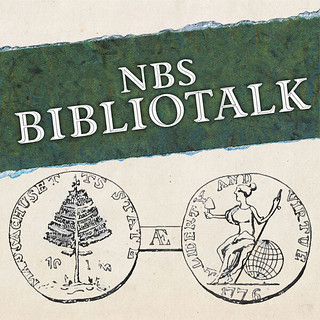 The latest episode of the NBS Bibliotalk podcast, “A Research Library, with John Hoskins“ is now available on the NBS website and other popular podcasting platforms such as Buzzsprout. Hoskins started as a young collector in the 1970s, picking out interesting pieces in pocket change. As often happens, John’s interest in the hobby waned during his teenage years. John came back to the hobby in his early 30s, collecting early U.S. copper and consulting the related works on varieties by Bill Noyes and John Wright.
The latest episode of the NBS Bibliotalk podcast, “A Research Library, with John Hoskins“ is now available on the NBS website and other popular podcasting platforms such as Buzzsprout. Hoskins started as a young collector in the 1970s, picking out interesting pieces in pocket change. As often happens, John’s interest in the hobby waned during his teenage years. John came back to the hobby in his early 30s, collecting early U.S. copper and consulting the related works on varieties by Bill Noyes and John Wright.
In the 2010s, John became more interested in collecting the earliest literature related to U.S. copper and colonial coins. His first significant acquisition was a plated Chapman catalog (Beckwith, 1923), and most of his purchases are guided by the research value of a given volume. Pedigrees of 1794 large cents are a particular interest, and Hoskins has made a number of discoveries in the ownership chains of various examples. John’s interests are not exclusively focused on U.S. numismatics, and he also pursues literature in the fields of ancient numismatics, European medals, and Conder tokens. John is especially drawn to literature in its original state, volumes which have not been rebound or excessively repaired. Join us for this podcast, Including John’s story of how he saved $10,000 by not buying a particular item at the Syd Martin library sale.
NEW BOOKS: COINS OF ENGLAND 2024
The 2024 editions of Coins of England have been published by Spink. -Editor
Coins of England and the United Kingdom Pre-Decimal and Decimal volumes comprise the Standard Catalogue of British Coins, and is still the only catalogue to feature every major coin type from Celtic to the Decimal coinage of Queen Elizabeth II. The 10th edition of the Decimal volume contains all coins minted during the reign of Queen Elizabeth II, also introducing the new coinage of King Charles III.
NEW BOOK: MONNAIES EURO FRANCAISES 2023
The new 2023 edition of the book on French Euro coins has been published by Gadoury. -Editor
- Monnaies Euro Francaises 2023
- Author: LAURENT BONNEAU
- Publisher: Gadoury
- Year: 2023
- Language: French
- Available
- € 59.00
This unique work is an opportunity to retrace European construction since 1992 through monetary history. City ECUs and euros, circulation and collector's coins, including tests, blanks, varieties and faults.
NEW BOOK: 100 GREATEST ANCIENT COINS, 3RD ED.
Whitman has announced the new edition of Harlan Berk’s 100 Greatest Ancient Coins. -Editor
The third edition of Harlan J. Berk’s 100 Greatest Ancient Coins will debut in December 2023, available from bookstores and hobby shops nationwide, and online (including at Whitman.com). Here, David Hendin, vice president and adjunct curator of the American Numismatic Society, shares his thoughts on the book and its author.
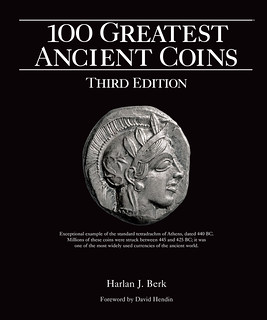 The greatest thing about Harlan Berk’s 100 Greatest Ancient Coins—aside from the coins!—is
that even family and friends of collectors will appreciate the fabulous photos of these treasures
and Harlan’s concise historic explanations. Collectors fear not, however, since Harlan has also
provided current scholarly information to satisfy them as well. He also gives us a book that
covers Greek, Roman, and so-called Byzantine coins in a single, impressively entertaining and
informative volume.
The greatest thing about Harlan Berk’s 100 Greatest Ancient Coins—aside from the coins!—is
that even family and friends of collectors will appreciate the fabulous photos of these treasures
and Harlan’s concise historic explanations. Collectors fear not, however, since Harlan has also
provided current scholarly information to satisfy them as well. He also gives us a book that
covers Greek, Roman, and so-called Byzantine coins in a single, impressively entertaining and
informative volume.
I can’t think of another person more qualified to have written this popular book than Harlan J. Berk. He is a serious collector and connoisseur of art and paintings. (He has amassed the best- known collection of Chicago Modernists.) Anyone who has even chatted casually with Harlan knows his excitement for the subjects, as well as his expertise. He has also been a leading coin dealer, based in Chicago, for more than fifty years. He maintains an extensive numismatic library at his office and welcomes collectors and scholars. I’m proud to say that we have been friends for fifty years or so.
BOOK REVIEW: THE 1909 LINCOLN WHEAT CENT
The December 2023 issue of ErrorScope from the Combined Organizations of Numismatic Error Collectors of America (CONECA) included a review by Greg Bennick of Shawn Tew’s new book The Rabbit Hole of the 1909 Lincoln Wheat Cent. With permission, we're republishing it here. Thanks to Greg and ErrorScope editor Allan Anderson. -Editor
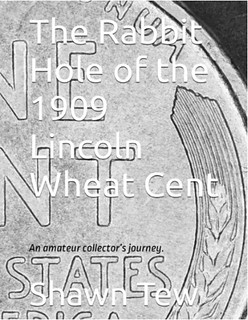 Congratulations to Shawn Tew on the publication of not just an insightful book on a classic American coin, but an important exploration into variety collecting overall. The 1909 cent is and has been an American classic for generations, but few know the aspects of the coin’s history from the perspectives this book offers. Tew starts by giving us insight into the transition between the Indian cent and Lincoln cent designs from within the mint, and the inner dynamics between engravers at the time – inner workings which were not always smoothly collaborative.
Congratulations to Shawn Tew on the publication of not just an insightful book on a classic American coin, but an important exploration into variety collecting overall. The 1909 cent is and has been an American classic for generations, but few know the aspects of the coin’s history from the perspectives this book offers. Tew starts by giving us insight into the transition between the Indian cent and Lincoln cent designs from within the mint, and the inner dynamics between engravers at the time – inner workings which were not always smoothly collaborative.
Shawn's book is extensively researched, exploring the now-known varieties of reverses for the 1909 cent. Thanks to recent discoveries, and the author and collaborators exploring the “rabbit hole” of this area of study, substantial detail is documented in the pages of this book which has not appeared elsewhere. The research is new, and the publication of this book will certainly draw attention to the 1909 cent, even more so than it has had for the last 100+ years.
THE BOOK BAZARRE
SANTA CLAUS ON THE NEWMAN NUMISMATIC PORTAL
Newman Numismatic Portal Project Coordinator Len Augsburger provided the following seasonal report. -Editor
There is No Santa Claus in Numismatics
An old saw holds that “there is no Santa Claus in numismatics.” A quick check of the Newman Portal reveals the saw to not be so old; indeed, most of the early uses appear in the Bowers house publications beginning in 1970. Bowers in turn credits Lee Hewitt, but even there the Numismatic Scrapbook uses the phrase only beginning in 1969. Regardless of when it first appeared, today we can say that Santa Claus appears frequently in numismatics, with 3,486 records identified across the Newman Portal.
VIDEO: NATIONAL CURRENCY FOUNDATION
The David Lisot Video Library on the Newman Numismatic Portal can be found at:
https://nnp.wustl.edu/library/multimediadetail/522852
We highlight one of his videos each week in The E-Sylum. Here's one from 2017 with Andrew Shiva speaking about the National Currency Foundation. -Editor
MORE ON MONEY MUSEUMS IN THE U.S.
Last week Pete Smith enumerated Money Museums in the United States, past and present. Here are some reader notes on the topic. -Editor
John Phipps adds:
Dahlonega Gold Museum in Dahlonega, Georgia
https://www.stateparks.com/dahlonega_gold_museum_historic_site_in_georgia.html
DAHLONEGA GOLD MUSEUM HISTORIC SITE
Twenty years before the famed 1849 gold rush in California, thousands of prospectors flocked into the Cherokee Nation in north Georgia, marking the true beginning of our country's first gold rush. Their dramatic story is told inside the historic 1836 Lumpkin County Courthouse, the oldest courthouse in Georgia. Dahlonega prospered with this mining activity, and a U.S. Branch Mint opened in 1838, coining more than $6 million in gold before closing in 1861. The museum's exhibits include a set of these coins, a nugget weighing more than five ounces, a large hydraulic cannon and nozzle used to blast soil from mountainsides, a film and gift shop.
NOTES FROM E-SYLUM READERS: DECEMBER 10, 2023
Christmas 1884 Love Token on $1 Gold Piece
Bob Hurst writes:
"Thank you very much for your hard work with The E-Sylum. I enjoy reading it first thing on Monday mornings. I thought with Christmas coming up in a few weeks that readers might like to see a really nice 'love token' that I have owned for over 30 years. I have attached photos of both sides. It is a really nice Type 3, $1."
Indeed - very nice piece! Thank you. -Editor
To read the earlier E-Sylum article, see:
SILVER AND GOLD COIN LOVE TOKEN JEWELRY
(https://www.coinbooks.org/v26/esylum_v26n49a13.html)
Other topics this week include the Lincoln Cent, Coin-A-Rama City, and the BASF Emergency Notes. -Editor
1894 LETTER ON MINT DOCUMENT DESTRUCTION
Roger W Burdette writes:
"A frequent complaint of numismatic researchers, and sometimes collectors, is the absence of historical documents that we knew once existed. Many of these old papers might have solutions to long standing questions, or contain insights to actions. In exploring U.S. Mint archives these gaps are obvious and extremely frustrating since they seem to hide what was once known.
"As we’ve gained better insights into existing files, we’ve also come across letters reminding us that deliberate destruction of historical mint materials has been a regular, more-or-less routine practice for the past two centuries.
"The accompanying letter is typical of others that show up about every 20 years in existing mint and Treasury Department correspondence. There’s no evident intention to hide anything by destroying old documents. It’s simply an opportunity to free storage space, so the whole activity can be repeated a decade or so later."
SEMIQUINCENTENNIAL COIN DESIGN IDEAS
Wayne Pearson submitted these design ideas for coins commemorating the 2026 semiquincentennial of U.S. independence. Thanks - what do people think? What other concepts would you suggest? -Editor
Under PUBLIC LAW 116–330, SEC. 3. ISSUANCE OF REDESIGNED CIRCULATING COINS EMBLEMATIC OF THE UNITED STATES SEMIQUINCENTENNIAL. Section 5112 of title 31, United States Code, is amended by adding at the end the following new subsection:
(y) REDESIGN AND ISSUANCE OF COINS EMBLEMATIC OF THE UNITED STATES SEMIQUINCENTENNIAL.— ‘‘(1) REDESIGN BEGINNING IN 2026.—
(A) IN GENERAL.—
(i) Notwithstanding the 4th, 5th, and 6th sentences of subsection (d)
(1), the Secretary may change the design on any of the coins authorized under this section and minted for issuance during the one-year time period.
SEMIQUINCENTENNIAL LOGO REVEALED
We still have no coin designs as 2026 rapidly approaches, but at least we have a logo now. Here's an excerpt from a New York Times article. -Editor
“It is a very difficult word,” Mr. Haviv said, veering gracefully around the pileup of prefixes that Congress chose to describe the 250th anniversary of American independence — fast approaching on July 4, 2026.
He said “semiquincentennial” just twice in an hourlong interview about designing graphics for the occasion, each time speeding through its seven syllables — semiquincentennial, semiquincentennial — as if hoping to limit the linguistic sloppiness inflicted on his otherwise sleek operation.
U.S. MINT SEMIQUINCENTENNIAL COIN SURVEYS
The U.S. Mint has their own Semiquincentennial logo. They are aware of the upcoming anniversary, and recently published a survey regarding one of their ideas - "re-issuing a selection of our greatest coins." -Editor
In honor of our country’s Semiquincentennial in 2026, we’ll be re-issuing a selection of our greatest coins as numismatic coins and we need your help making the decision! All you need to do is complete our quick, anonymous “Best of the Mint” survey where you’ll rank a series of coins. Take the survey today and be a part of a historic milestone.
VOCABULARY TERM: OVERLAP
Here's another entry from Dick Johnson's Encyclopedia of Coin and Medal Terminology. I added images. -Editor
Overlap. Two scenes, usually but not necessarily circular, shown on the same plane with the dominant scene extending into the subordinate scene. Because medals are customarily circular the two sides can often be shown this way, as one side overlapping the other. The reverse of the 1890 Benjamin Harrison Indian Peace Medal (IP-48) exhibits two circular scenes overlapped (illustrated). When the two scenes are circular and placed side-by-side (not overlapped) it is called double circle. Overlap is a type of unusual shapes.
PHILATELIC MUSEUMS IN THE UNITED STATES
last week E-Sylum Feature Writer and American Numismatic Biographies author Pete Smith submitted a two-part listing of Money Museums in the United States, past and present. This week he submitted this companion piece on Philatelic Museums in the United States. Thanks! Interesting. -Editor
What was the first philatelic museum in the United States? How many philatelic museums are there currently? This listing might answer those questions, or perhaps not.
1866 The National Philatelic Collection at the Smithsonian Institution Museum of American History traces it beginning to the acquisition of a pane of 10-cent Confederate stamps in 1866. The first exposition was in 1908 following a donation of 20,000 stamps from David W. Cromwell. From 1908 to 1963, the collection was at the Arts and Industries building. In 1964 the collection was moved to the National Museum of American History.
1894 A Postal Museum was established on the first floor of the Post Office Building in Washington, DC. This was proposed by Postmaster General John Wanamaker, founder of Philadelphia department stores. In the early years it appeared to come and go. The collection was shown at the Atlanta Exposition and returned in 1906; later shown at the Jamestown Exposition and returned to a new space on the third floor in 1908. It closed in 1911 with the collection transferred to the Smithsonian.
DAVID SCHENKMAN INTERVIEW, PART SIX
Greg Bennick's latest interview for the Newman Numismatic Portal is with token expert David Schenkman. Here's the last of six parts, where Dave tells the story of buying and selling a Polhemus counterstamp on a $20 gold piece. -Editor
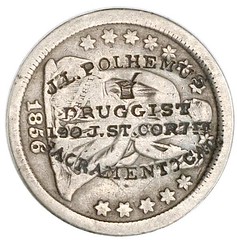 Greg Bennick: Yeah, it really is just the fascination and the fun and just following your own
lead in a way. I know that when counterstamps first came into my reality and I acquired my first
couple of pieces by a druggist from Sacramento whose last name was Polhemus, and I got
really interested in this guy's counterstamps and bought a couple of them and then started
thinking, hmm, maybe I'm going to collect specifically things that I can connect to a historical
person. And then your mind starts going and you go down that avenue and it's just fascinating
and fun.
Greg Bennick: Yeah, it really is just the fascination and the fun and just following your own
lead in a way. I know that when counterstamps first came into my reality and I acquired my first
couple of pieces by a druggist from Sacramento whose last name was Polhemus, and I got
really interested in this guy's counterstamps and bought a couple of them and then started
thinking, hmm, maybe I'm going to collect specifically things that I can connect to a historical
person. And then your mind starts going and you go down that avenue and it's just fascinating
and fun.
David Schenkman: And you can still make finds. See your Polhemus counterstamp, the mention of that, reminds me of one I had on a $20 gold piece.
Greg Bennick: Please tell us the story. It's going to make my day.
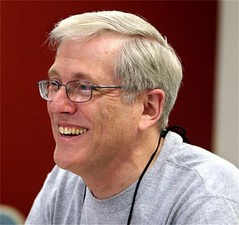 David Schenkman: Well I guess in the late seventies, a good friend of mine who owned a coin
shop in Virginia picked up a Polhemus counterstamp on a $20 gold piece. And I said, ‘What are
you going to do with it?’ And he said, ‘Well, I’ll probably offer it for $300.’ At the time, low
grade twenties were selling for around 150. I said, “Well I'll buy it, Joe.” So I bought the piece
and I started writing a column for The Numismatist in the late seventies, which I did for a
couple of years back then, and that was the subject of my first counterstamps. So John Ford
called me up shortly after that and told me he was going to do me a favor and take it off my
hands for $750. And I declined, which didn't make him very happy. So, when I had it for a few
years and I was setting up at a coin show in Philadelphia and the dealer that I bought the piece
from was at the next table. Ray Byrne, who was a good friend, he was a very advanced collector
of counterstamps, among other things, from Pittsburgh, came up to me and he said, I want to
buy your Polhemus counterstamp. I said, I don't want to sell it, and he kept badgering me. And
finally, the guy I won’t mention his name, who I bought it from, came up to me, he said, “Don't
be a jerk, Schenkman, but put a price on it.” I said, “Okay, Ray, $15,000. The dealer I bought it
from the colors started going out of his head when Ray said, “Well I'll take it.” And so at that
time it was a record price for any token. In fact, there was a half-page article in Coin World
about it.
David Schenkman: Well I guess in the late seventies, a good friend of mine who owned a coin
shop in Virginia picked up a Polhemus counterstamp on a $20 gold piece. And I said, ‘What are
you going to do with it?’ And he said, ‘Well, I’ll probably offer it for $300.’ At the time, low
grade twenties were selling for around 150. I said, “Well I'll buy it, Joe.” So I bought the piece
and I started writing a column for The Numismatist in the late seventies, which I did for a
couple of years back then, and that was the subject of my first counterstamps. So John Ford
called me up shortly after that and told me he was going to do me a favor and take it off my
hands for $750. And I declined, which didn't make him very happy. So, when I had it for a few
years and I was setting up at a coin show in Philadelphia and the dealer that I bought the piece
from was at the next table. Ray Byrne, who was a good friend, he was a very advanced collector
of counterstamps, among other things, from Pittsburgh, came up to me and he said, I want to
buy your Polhemus counterstamp. I said, I don't want to sell it, and he kept badgering me. And
finally, the guy I won’t mention his name, who I bought it from, came up to me, he said, “Don't
be a jerk, Schenkman, but put a price on it.” I said, “Okay, Ray, $15,000. The dealer I bought it
from the colors started going out of his head when Ray said, “Well I'll take it.” And so at that
time it was a record price for any token. In fact, there was a half-page article in Coin World
about it.
ANACS FIRST-GENERATION SLABS
While we generally avoid commercial discussions of price and grade, hobby history is fair game. This short article by Stack's Bowers Numismatist Asher Zelson examines early slabs from pioneering third-party grader ANACS. -Editor
Collectors and dealers often salivate over early and first generation holders from PCGS and NGC, eager at the prospect of upgrading coins or sending out the slabs for recognition from CAC. The terms “Rattler,” “OGH,” and “Fatty” may sound meaningless to the layperson, but for those involved in the hobby, these monikers can be indicative of a more conservative period in third-party grading (TPG). While “old holders” from PCGS and NGC often receive a lot of attention, early slabs produced by ANACS often fly under the radar.
VILA RICA MOEDAS AUCTION 19
Here's the announcement for the Vila Rica Moedas Auction 19,coming up December 12-13. For bibliophiles, there is a section of numismatic literature as described in the earlier article linked below. -Editor
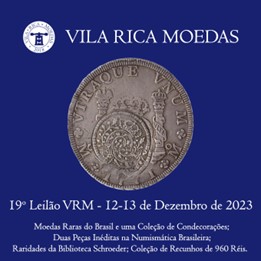 Vila Rica Moedas (www.vilaricamoedas.com) is a Numismatic company based in São Paulo,
Brazil, and it is run by its two partners David André Levy and Hilton Lúcio, both authors of
reference catalogs and accomplished numismatists.
Vila Rica Moedas (www.vilaricamoedas.com) is a Numismatic company based in São Paulo,
Brazil, and it is run by its two partners David André Levy and Hilton Lúcio, both authors of
reference catalogs and accomplished numismatists.
Vila Rica will hold its Auction 19 on December 12th and 13th. The auction is internet-only and split over two sessions. It will offer a vast range of Brazilian coins and decorations from Colonial to Republican issues, featuring:
- Two new pieces in Brazilian Numismatics: a Mexican pillar dollar counter stamped with a stamp meant only for gold ingots, and an essay in Titatium made in the 1970’s by the Brazilian mint (Casa da Moeda do Brasil or CMB);
- A collection of decorations, including three exceptional Orders of the Rose, a Portuguese Badge with the Orders of Christ, Avis and Sant'iago of the Sword, an Imperial Order of the Cross and two very rare decorations from the Cisplatine campaigns;
- A collection of rare 960 overstrikes;
- Colonial silver coins, including an exceptional 640 Réis 1816M and a 960 Réis 1825P minted in the Province of Grão Pará;
- A selection of rare books from the Cláudio Schroeder Library, including the famous “Catálogo de Medalhas Brazileiras e das Estrangeiras Referentes ao Brazil” (Catalog of Brazilian and Foreign Medals Referring to Brazil), by the Viscountess of Cavalcanti, as well as a catalog by the same Viscountess, previous to this one, extremely rare (only 25 printed copies) and missing in the vast majority of the most advanced libraries;
- A selection of world coins.
THE LUGDUNUM AUCTION 23
Dr. Jonas Emmanuel Flueck writes:
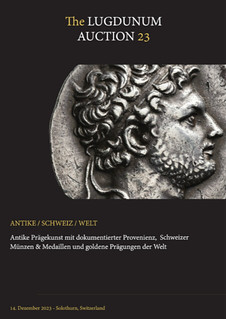 "I would like to kindly inform readers about my coming auction, The Lugdunum Auction 23, that will take place on 14 December 2023 and includes numerous provenanced ancient coins.
"I would like to kindly inform readers about my coming auction, The Lugdunum Auction 23, that will take place on 14 December 2023 and includes numerous provenanced ancient coins.
"Interesting I find, is a small collection of almost 100 Greek coins that nearly all have a documented provenance. They come from a collection made by a Swiss collector from the 1970s to the 1990s. If you look at the decription of the provenances on Numisbids, I have added a link to my Ex Numis site that shows, when you click on a given provenance, the picture of the coin in the original catalogue. I call it Ex Numis Check. It helps to make sure that the given provenance is correct.
"I have also done videos of the Ancient coins."
NUMISMATIC NUGGETS: DECEMBER 10, 2023
Here's a selection of interesting or unusual items I came across in the marketplace this week. Tell us what you think of some of these. -Editor
Shapur I Gold Dinar
SASANIAN KINGS. Shapur I. 240-272 AD. Gold Dinar (7.33 gm; 23 mm). "The Mazda worshipper, the divine Shahpur, the king of kings of Iran who is descended from the Gods" in Pahlavi (crude), crowned and cuirassed bust right / "Fire of Shahpur" in Pahlavi (crude), fire altar with attendants; faravahr symbol (wreath) to left of flames. Göbl I/1; Paruck 81; Alram 687; MACW -; De Morgan pg. 665, 24 var. (no symbol); Sunrise 740. Lovely strike on a nice broad flan. Choice FDC. Lustrous.
Nice coin - I don't remember seeing this type before. From the Pars Coins December 18, 2023 sale. -Editor
To read the complete lot description, see:
Lot 105: SASANIAN KINGS. Shapur I. 240-272 AD. Gold Dinar.
(https://www.vauctions.com/Event/LotDetails/887387)
Other topics this week include a United Fruit Co. token, and an Apollo 11 Silver Robbins Medal. -Editor
JUNO ON ANCIENT COINS
Mike Markowitz published a nice article on CoinWeek about Juno on ancient coins. Here's an excerpt - see the complete article online for much more. -Editor
FOR ANCIENT ROMANS, Juno (Iuno in Latin) was the queen of the gods, sister and wife of the supreme deity, Jupiter. She was identified with the Greek goddess Hera, although Romans worshipped her under many different local cults.
As Juno Sospita (“Savior”), she was a war goddess, armed with spear and shield.
As Juno Moneta (“The Warner”), she was the guardian of Rome, and later the patroness of mint-workers, since Rome’s mint was located in her main temple.
AUSSIES QUEUE FOR TWOS
I wouldn't want to be among the crowds, but it's always nice to hear people are interested in new coins. These events occur regularly around the world these days. -Editor
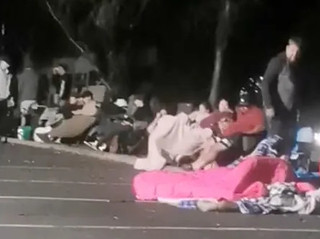 A new set of rare $2 coins, which have soared in value, are being released to the public today and the Royal Australian Mint is already being inundated by would-be collectors who queued up overnight to get their hands on them.
A new set of rare $2 coins, which have soared in value, are being released to the public today and the Royal Australian Mint is already being inundated by would-be collectors who queued up overnight to get their hands on them.
It’s been 35 years since the $2 coin was released in 1988 and to “honour the significant milestone”, a 14-coin collection showcasing colourful commemorative designs is being released. People started lining up outside the mint in Canberra at 3.30pm yesterday. Coin expert Matt Thompson told Yahoo Finance why demand was “already through the roof” for the $239 set.
THE BOOK BAZARRE
SINGAPORE LINES UP FOR $10 COINS
And here we are - a story from Singapore about a run on a new $10 commemorative coin. -Editor
After visiting three different DBS Bank branches, Mr Andiappan, a 72-year-old coin collector, finally obtained eight $10 commemorative coins for the 100th birth anniversary of Mr Lee Kuan Yew.
The retiree, who goes by one name, tried the DBS Bishan branch and then the DBS Towner Road branch in Boon Keng on the morning of Dec 4 – the first day the coins were available for walk-in exchange at banks – but both had run out of coins available for exchange that day.
MIKE TYSON'S “BADDEST COIN ON THE PLANET”
There are coins now for nearly everything and everybody. Why not Mike Tyson? -Editor
Boxing legend and pop-culture icon Mike Tyson has joined forces with Houston’s Celebrity Mint to launch a limited edition series of gold and silver collectibles, just in time for the holiday shopping season.
Crafted from .9999 gold and .999 silver, the pioneering legal tender trading coins are now available on CelebrityMint.com and eBay. Thousands of viewers tuned in to eBay Live as Iron Mike joined Celebrity Mint to unveil his exclusive line of products.
“This is legendary,” Tyson said on the eBay Live broadcast. “This is humbling me. I’m very proud of this... This is the baddest coin on the planet.”
STACK'S BOWERS COSTA RICA BANKNOTES
Stack's Bowers Director of World Currency Auctions Aris Maragoudakis published an article about the Costa Rica banknote collection the firm is offering next month. -Editor
Having handled the Eldorado Collection, and the Rosenman collection just last year, we certainly aren’t strangers to rare Latin American paper money. Even still, I have been in awe of these notes since I first laid eyes on them. I don’t quite feel as though my voice alone should properly present this section so I reached out to a dear friend of mine, no stranger to rare notes, who belongs on the Mt. Rushmore of World Paper Money. He lends his voice here to properly introduce this collection.
Foreword to this Costa Rica selection by Pablo Hoffman of Nuevo Mundo World Paper Money.
GAZA CASH CONVOY MOVES BANKNOTES
A secret UN convoy carried cash to Gaza banks during the recent Israel-Hamas humanitarian cease-fire. -Editor
During the Israel-Hamas truce at the end of last month, 900,000 banknotes totaling NIS 180 million were secretly moved from the north of the Gaza Strip to the south of the Strip, "The Financial Times" (FT) has revealed. The 200 shekel notes, weighing nearly a ton, were transported in a convoy of vehicles.
The unusual mission was supported by the UN under heavy security and was undertaken with the knowledge of Israel.
APPLE COMPUTER CHECK BRINGS BIG BUCKS
Justin Perrault sent along this article about an early Apple Computer Company check that just sold for $46,063 with the buyer's premium. Thanks. -Editor
It's not clear what Apple was buying from RadioShack on July 23, 1976 for a mere four bucks and some change, and adjusting for inflation doesn't make it much clearer. According to the US Bureau of Labor statistics, Jobs would have been cutting a check for $21.61 were he to make the same purchase in 2023.
Regardless, the check was cut around the same time the Apple-1 went on sale at Paul Terrell's Byte Shop in Mountain View, CA, for $666.66, meaning it was probably for something important. For those unfamiliar with the saga of Apple's early days, Terrell offered to buy 50 of the machines for $500 a pop, but only if they came fully assembled. Other hobbyist computers of the era typically came as unassembled kits. So solder, perhaps?
NOTEWORTHY ISSUES 0.005 BITCOIN NOTE
Numismatics covers both coins and paper money, and so does the cryptocurrency world. Physical bitcoins have existed for some time and have been the focus of high-profile sales in recent years at Stack's Bowers and Heritage. In 2020 a new firm entered the market with a physical crypto banknote offering. In a press release, Noteworthy announced a new "5 millibit" note. -Editor
Noteworthy, the premier designer of physical cryptonotes, announced the sale of its new 5 millibit (mBTC) note, the first small-denomination, fully fungible bitcoin cryptonote. This new bill, which equates to 0.005 BTC (approximately $85 based on today’s prices) makes buying crypto simple for people of all ages and backgrounds through its familiar cash format. Following the successful unveiling of its 1BTC note at CoinDesk’s Consensus in June 2022, this smaller denomination lowers the barrier to entry, helping to increase access and drive adoption of digital assets.
LOOSE CHANGE: DECEMBER 10, 2023
Here are some additional items in the media this week that may be of interest. -Editor
Lianna Spurrier published a nice article for CoinWeek about WWII coinage. Here's an excerpt - see the complete article online for more. -Editor
World War II affected coins almost everywhere around the world.
In the United States, the most dramatic effect that the war had on our coinage was the steel penny. The composition of our nickels changed as well, but that wasn’t an immediately noticeable change in the appearance of the coin. Both changes are well-known by collectors today.
But in other countries, the coinage was changed in much stranger and farther reaching ways than steel cents and partially-silver nickels. This article presents a sampling of the fascinating coin experiments conducted abroad.
To read the complete article, see:
How World War II Created Strange and Unusual Coins
(https://coinweek.com/world-war-ii-strange-unusual-world-coins/)
Other topics this week include checks, and the colors of the 1864 Confederate $500 note. -Editor


